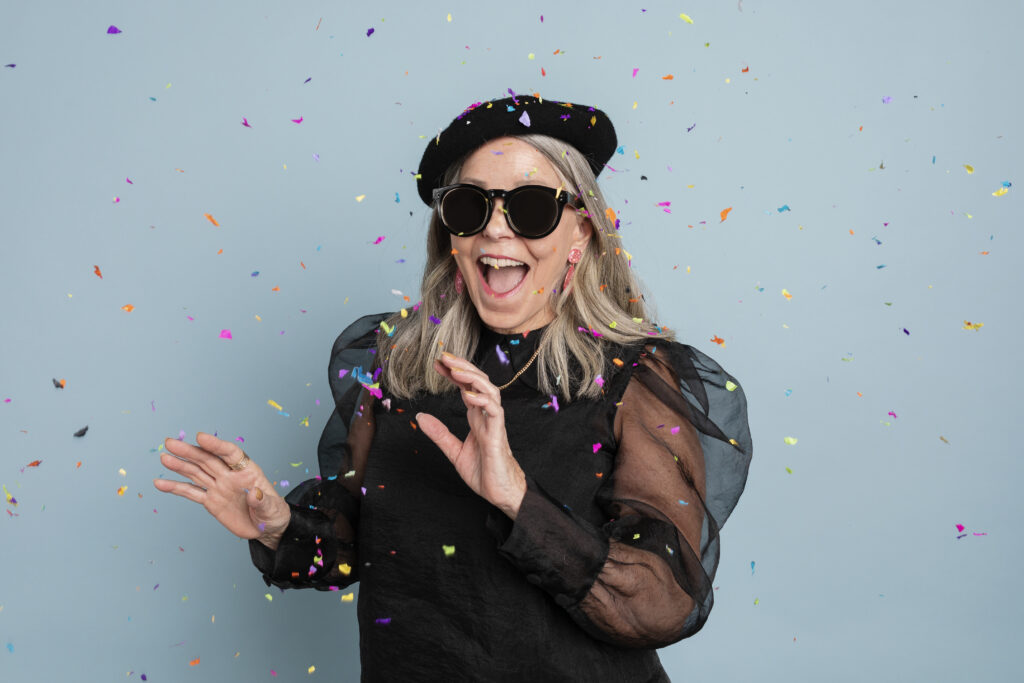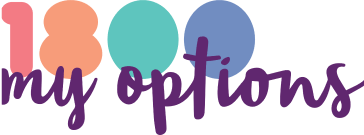
Body image

Women experience unrealistic beauty standards throughout our lives, and this is no exception for older women. We may have all heard the term ‘ageing gracefully’ and the pressure that follows to remain ‘youthful’. This can negatively impact how we feel about our bodies.
‘Body image’ is the thoughts and feelings we have towards our bodies and the way we look. It includes age, gender identity, size, shape, and weight. Our body image is never constant and frequently changes throughout our lives. Sometimes we might feel happy about the way we look, and sometimes we may wish things looked a little different. Having a negative view of our bodies can impact our self-esteem and mental health. It is important to keep in mind that all bodies change throughout our lives, and this is a normal process of ageing.
Body image affects people differently and can affect any one of any age, gender or culture.
Migrant and refugee communities
Different cultures have different traditions and body ideals, and the pressures to conform may be stressful. There is also evidence to suggest that trying to fit in and conform to a new culture can increase the risk of being unhappy about how your body looks. The Butterfly Foundation has a whole section on how people from multicultural communities can feel pressure that affects body image. They also list some useful support services.
We’re so influenced by Western beauty. And there are lot of body image issues in non-Western countries. People like me, growing up, have been told that having Western features is the ideal way to look and live your life. We need to show people that beauty comes in all shapes and sizes.
LGBTQI+ communities
People in the LGBTQI+ community are at an increased risk of body image issues, because of past lived experiences of discrimination. Additionally, trans and gender diverse people may experience gender dysphoria, which is distress or discomfort that may occur when gender identities and biological sex do not align. This also may stem from not having their identities validated and may be impacted by the current healthcare system not being set up to support this community.
Whilst not all trans and gender diverse people experience gender dysphoria, it can play a large role in how you feel about your body, and the pressure you face to meet ‘acceptable’ body standards. For more information and support on this topic, see TransHub.
We’ve also shared a video from Butterly Foundation’s Body Pride initiative, which, while talking mainly about younger people, is a helpful way of understanding how culture and gender can affect our relationships with food and our bodies.
Ways to practise body positivity

- When you catch yourself speaking negatively about your body, try and replace those words with what you appreciate about yourself; focus on what your body can do for you rather than how it looks.
- Question media portrayals of women and recognise that they are unrealistic; try not to compare yourself to what you see online or on the TV.
- Focus on eating foods for nourishment and taking part in physical activities that are interesting and enjoyable, rather than focusing on a weight-related goal.
- Talk about your experience with other women who you feel safe with – you might find some common ground.
- Try and change your mindset when it comes to other people’s bodies too – if you catch yourself commenting or being critical of others, reflect on why it is you feel that way.
- Keep in mind that nobody is perfect, we all make mistakes and change will take time. Just keep being kind to yourself.
We have created a gallery that celebrates older women and their bodies. There is no one size fits all when it comes to a ‘normal’ body and this gallery aims to increase the representation of older women in the media.
Want to learn more about body image?
- More information on an inclusive movement that promotes health at every size.
- A directory of verified doctors that follow the principles of health at every size, and actively work towards reducing size-based discrimination.
- More information on size inclusive health.
- More information on focusing on your health rather than weight.
- Tips for boosting your body image.
- Information, resources, tips and advice specifically for LGBTQI+ individuals.
Eating disorders in older women
Eating disorders are a serious health concern. They can affect anyone, including older adults. These disorders are about having troubling thoughts and feelings about food and eating. There are different types of eating disorders, like anorexia, bulimia, and binge eating. To learn more, you can look up Eating Disorders Victoria.
In the past, studies looked only at younger women. But now, studies show that more women over 50 are facing these challenges too. As women get older, we can still feel pressure to look a certain way because of what we see in the media. Research shows that this pressure can lead to unhealthy feelings about our bodies and can lead to eating disorders as we age.
In the video below a doctor answers some common questions about eating disorders, including what different disorders are and how to recognise them.
If you are concerned about yourself or someone you know, it is important to seek professional help. Visit Reach Out for a list of support services around Australia.
Australian Human Rights Commission. (nd) Chapter 4: the role and influence of the media
Bärebring L, Palmqvist, M, Winkvist, A et al. (2020) Gender differences in perceived food healthiness and food avoidance in a Swedish population-based survey: a cross sectional study. Nutrition Journal 19.
Bernstein M (2017) Nutritional Needs of the Older Adult. Phys Med Rehabil Clin N Am. 28(4), 747-766.
Cameron E, Ward P, Mandville-Anstey SA, Coombs A. (2018) The female aging body: a systematic review of female perspectives on aging, health, and body image. Journal of Women and Ageing. 31(1): 3-17
Carrard I, Rothen S, Rodgers RF. (2020). Body image and disordered eating in older women: a tripartite sociocultural model. Eating Behaviours. 38(101412)
Carrard I, Rothen S. (2020) Factors associated with disordered eating behaviours and attitudes in older women. Eating and Weight Disorders – Studies on Anorexia, Bulimia and Obesity. 25: 567-575
Eat for Health. (nd) Healthy eating when you're older
Hanna KL, Collins PF (2015) Relationship between living alone and food and nutrient intake. Nutrition Review 73(9), 594–611.
Hofmeier S, Runfola C, Sala M, Gagne D, Brownley K, Bulik C. (2017) Body image, ageing and identity in women over 50: the gender and body image (GABI) study. Journal of Women and Ageing. 29(1): 3-14
Kilpela LS, Becker CB, Wesley N, Stewart T. (2015). Body image in adult women: moving beyond the younger years. Advances in Eating Disorders. 3(2): 144-164
Nutrition Australia. (2021) Nutrition and older adults
Pontzer H, Yamada Y, Sagayama H, Ainslie P, Andersen LF, Anderson LJ, et al. (2021) Daily energy expenditure through the human life course. Science 373(6556): 808-812
Samuels KL, Maine MM, Tantillo M. (2019) Disordered eating, eating disorders, and body image in midlife and older women. Current Psychiatry Reports. 21(70)
Silva TR, Oppermann K, Reis FM, Spritzer PM. (2021) Nutrition in menopausal women: a narrative review. Nutrients. 13(7)
Wallace TC, Bailey RL, Blumberg JB, Burton-Freeman B, Chen O, Crowe-White KM, et al. (2019) Fruits, vegetables, and health: a comprehensive narrative, umbrella review of the science and recommendations for enhanced public policy to improve intake. Critical Reviews in Food Science and Nutrition. 60(13)
Yeung SSY, Kwan M, Woo J (2021) Healthy Diet for Healthy Aging. Nutrients 13(12).
Relationship between living alone and food and nutrient intake - PubMed (nih.gov)





